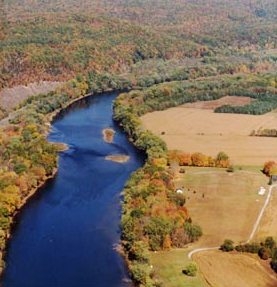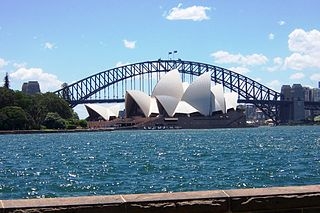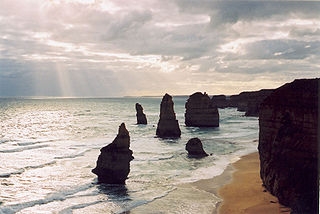Landscapes And Landforms Review Quiz
(323).webp)
Explore the diverse landscapes and landforms of the Earth through this engaging quiz. Identify different types, from riverine to tropical rainforests, and test your understanding of natural and human-altered landscapes.
- 1.
What is a landscape?
- A.
A human creation
- B.
Part of the Earth's surface
- C.
A mountain
Correct Answer
B. Part of the Earth's surfaceExplanation
A landscape refers to a portion of the Earth's surface that can be seen and observed. It includes various natural features such as mountains, hills, valleys, rivers, and forests, as well as human-made elements like buildings, roads, and cultivated fields. It is a broad term that encompasses the physical characteristics and the visual appeal of a particular area.Rate this question:
-
- 2.
How many different types of landscapes are there?
- A.
5
- B.
6
- C.
7
Correct Answer
C. 7Explanation
The answer is 7 because the question asks for the number of different types of landscapes. Since there are 7 options given, it implies that there are 7 different types of landscapes.Rate this question:
-
- 3.
This is an image of a ______________ landscape (fill in the blank).
- A.
Riverine
- B.
Coastal
- C.
Desert
Correct Answer
A. RiverineExplanation
The correct answer is Riverine. This is because the image shows a landscape that is characterized by the presence of a river or rivers. The image may include features such as meandering rivers, floodplains, and vegetation typical of riverbanks. The presence of water bodies and their influence on the surrounding landforms and vegetation indicate a riverine landscape.Rate this question:
-
- 4.
Identify this type of landscape.
Correct Answer
Tropical rainforestExplanation
This type of landscape is known as a tropical rainforest. Tropical rainforests are characterized by high levels of rainfall, high humidity, and a diverse range of plant and animal species. They are typically found near the equator in regions such as the Amazon Basin, Congo Basin, and Southeast Asia. These landscapes are known for their lush vegetation, tall trees, and dense canopy, creating a unique and vibrant ecosystem. The high rainfall and warm temperatures support the growth of a wide variety of plant species, making tropical rainforests one of the most biodiverse habitats on Earth.Rate this question:
- 5.
The image below illustrates both natural AND human landscapes.
- A.
True
- B.
False
Correct Answer
A. TrueExplanation
The image provided shows both natural and human landscapes. This means that it includes elements of nature, such as trees, mountains, or bodies of water, as well as elements created or modified by humans, such as buildings, roads, or farmland. Therefore, the statement "The image below illustrates both natural AND human landscapes" is true.Rate this question:
-
- 6.
Identify this iconic landscape located in Victoria.
Correct Answer
The Twelve Apostles, twelve apostles, Twelve ApostlesExplanation
This iconic landscape is known as the Twelve Apostles, located along the Great Ocean Road in Victoria, Australia. The Twelve Apostles are a collection of limestone stacks formed by erosion from the Southern Ocean, creating a stunning coastal formation that is a popular tourist attraction. Despite the name, there are fewer than twelve of these stacks remaining, but they continue to be a symbol of natural beauty in the region.Rate this question:
- 7.
What is a landform?
- A.
A natural geographical feature or shape on the Earth's surface
- B.
A mountain
- C.
A geographical force
Correct Answer
A. A natural geographical feature or shape on the Earth's surfaceExplanation
A landform refers to a natural geographical feature or shape on the Earth's surface. This can include various formations such as mountains, hills, valleys, plateaus, and plains. Landforms are created through various geological processes such as erosion, deposition, tectonic activity, and weathering. They play a significant role in shaping the Earth's surface and are essential for understanding the physical characteristics and processes of different regions.Rate this question:
-
- 8.
Name the most active volcano. Hint: It begins with a 'S' and is found in Italy.
Correct Answer
StromboliExplanation
Stromboli is the correct answer to the question. It is a highly active volcano located in Italy. Known for its frequent and persistent eruptions, Stromboli is often referred to as the "Lighthouse of the Mediterranean" due to its constant volcanic activity, which includes regular small explosions and lava flows. The volcano has been erupting for thousands of years and is a popular tourist attraction for those seeking to witness its spectacular displays of volcanic activity.Rate this question:
- 9.
What is the name of an iconic desert landform in Australia?
- A.
The Twelve Apostles
- B.
Mount Kosciuszko
- C.
Uluru
Correct Answer
C. UluruExplanation
Uluru is the correct answer because it is a well-known and iconic desert landform in Australia. Also known as Ayers Rock, Uluru is a large sandstone rock formation located in the Northern Territory. It is a sacred site for the Indigenous Anangu people and is recognized for its cultural and spiritual significance. Uluru is famous for its unique red color and massive size, making it a popular tourist attraction and symbol of Australia.Rate this question:
-
- 10.
Landforms can be created by... (choose the most correct answer)
- A.
Tectonic plate movement
- B.
Sunshine
- C.
Lizards and snakes
Correct Answer
A. Tectonic plate movementExplanation
Landforms are primarily created by tectonic plate movement. This movement can result in the formation of mountains, valleys, and other geological features. Tectonic plates, which are massive pieces of the Earth's crust, interact with each other, causing earthquakes, volcanic activity, and the uplift or subsidence of land. These processes over millions of years shape the Earth's surface and create various landforms. Sunshine and the presence of lizards and snakes do not play a significant role in the creation of landforms.Rate this question:
-
Quiz Review Timeline +
Our quizzes are rigorously reviewed, monitored and continuously updated by our expert board to maintain accuracy, relevance, and timeliness.
-
Current Version
-
Mar 18, 2025Quiz Edited by
ProProfs Editorial Team -
Apr 05, 2015Quiz Created by
Vanessapitt
 Back to top
Back to top






